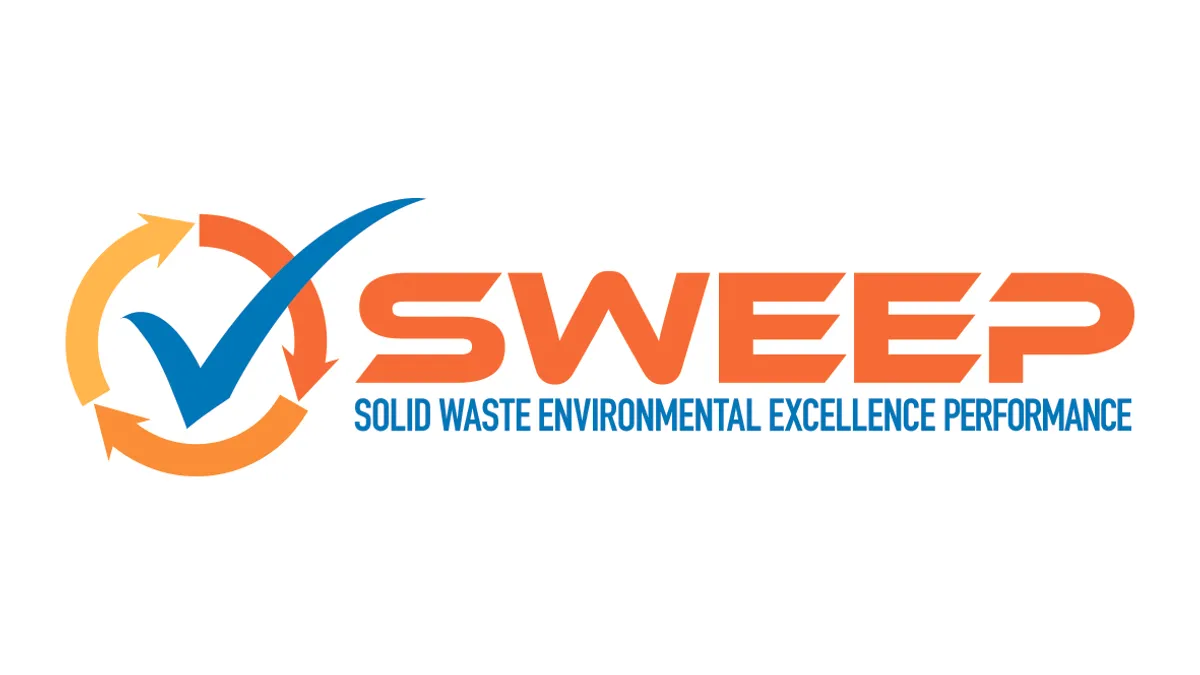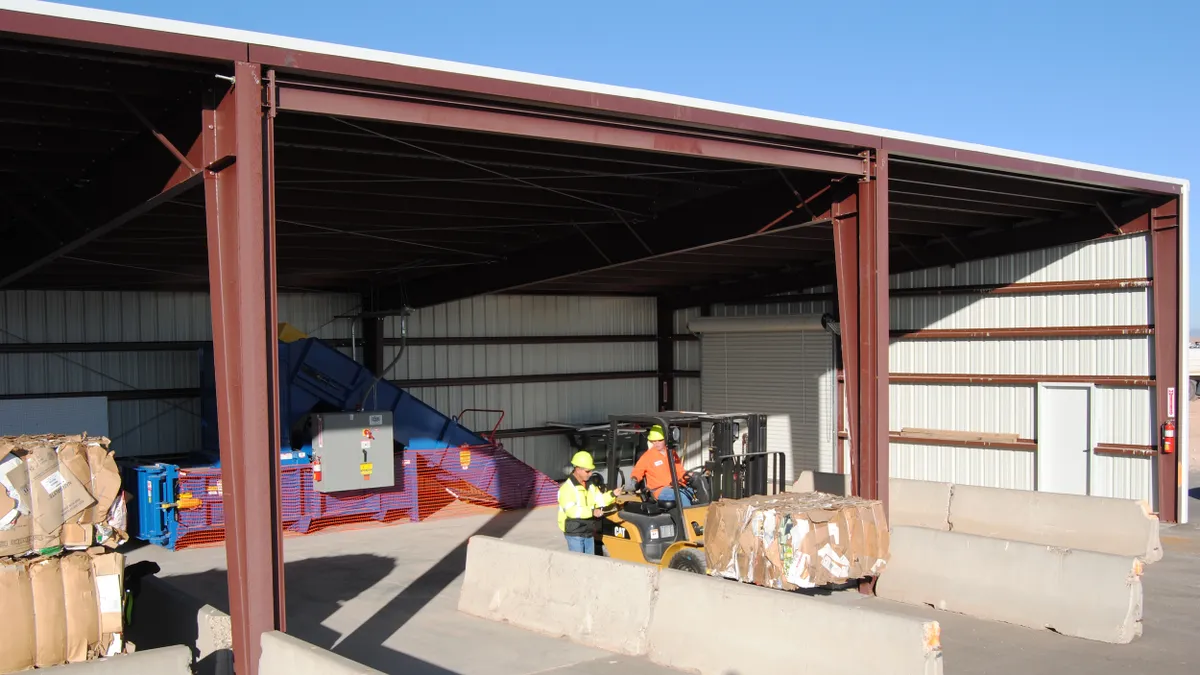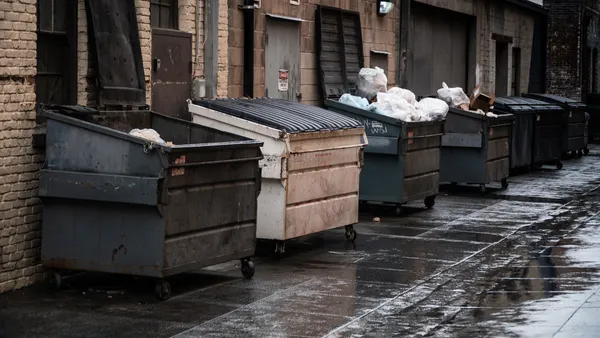Dive Brief:
- The Solid Waste Environmental Excellence Protocol (SWEEP) Municipal Standard has been published in draft form. Following the Leadership in Energy and Environmental Design (LEED) model, its goal is to evaluate "the environmental, economic and social aspects of providing municipal solid waste services."
- The new municipal standard, as well as a forthcoming industry-specific standard, includes six categories – sustainable material management policy, waste generation and prevention, solid waste collection, post-collection recovery, post-collection disposal and innovation.
- SWEEP is currently accepting comments, in accordance with American National Standards Institute procedure, through the end of January. From there, a consensus meeting will be held in Washington, D.C. on Feb. 12 and a balloting process will occur into the spring. The goal is to launch pilots with as many as 24 municipal or private entities by late 2019.
Dive Insight:
This new draft comes after more than two years of meetings and calls to hash out the finer points of how waste and recycling operations around the country can, and should, run under the most ideal conditions. The 18 members of the three committees behind all of this include many recognizable names from industry circuits on both the public and private sides. As envisioned, municipalities will eventually be able to apply for SWEEP certification or contract with certified service providers.
“The idea is to build a market of buyers and suppliers of sustainable materials management services and programs," Rob Watson, founder of both the LEED and SWEEP standards, told Waste Dive. “The main goal of the initial release of SWEEP is to begin establishing a common platform and getting it used."
The aim of this process is to have something both functional and motivational. There will be an emphasis on utilizing current resources (such as the SWANA Hauler Safety Toolkit) and existing data streams, while also encouraging more innovation wherever possible. According to Watson's estimates, only about 10% of operators would currently meet some of the highest tier standards.
“We’re trying to blend things that are relatively widely done — that are considered best typical practice — along with things that are a little bit more advanced, along with things that might be a bit of a reach."
Each category has multiple ways to earn credits, which will be organized under the following KPIs: efficiency and effectiveness, environmental performance, economic performance, public participation, working conditions and social impact.
The credits themselves span the full range of any municipal program — from reduction and recycling education, to collection technology, to post-collection or -disposal methods, all the way to end markets. Common themes include reducing greenhouse gas emissions, creating safe working conditions, ensuring facilities are good neighbors and emphasizing the best possible operational standards.
For example, a section on municipal post-collection recovery gets into the finer details of recovery rate accounting, MRF equipment and the distance of buyers for scrap or organic commodities within a matter of miles.
"[W]e’re hoping that we can take this crisis and help provide something of a roadmap or a template for the next phase in the industry as it moves more comprehensively into the future," said Watson, in reference to current commodity market changes spurred by China's scrap import restrictions.
While Watson recognizes there will still be many details to iron out in the months and years ahead, he's optimistic that the industry can benefit from this type of cohesive standard. Just as he saw a need to help clarify what exactly it means to be a "green building" with the LEED certification, he anticipates SWEEP could bring similar clarity to the broader industry at a time of a transition for recycling and beyond.















